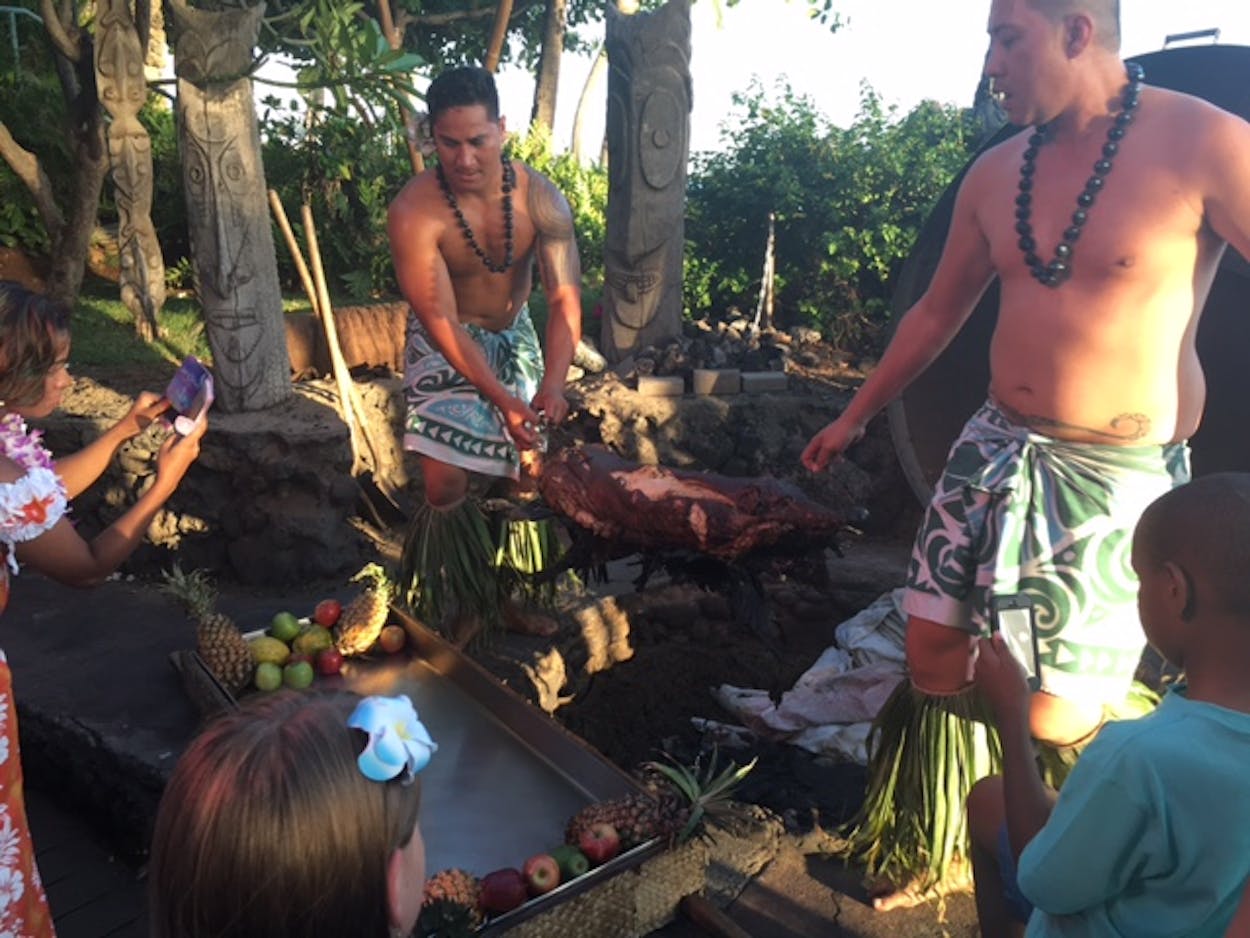The world’s oldest barbecue tradition is cooking meat in underground pits. It’s a method so old, that our ancestors cooked mammoths in underground pits some 29,000 years ago. In modern day Texas, meat cooked in subterranean pits is most often referred to as barbacoa, like the barbacoa de cabeza that Vera’s in Brownsville is famous for. While visiting Hawaii, I encountered a very similar barbecue tradition there: kalua. Kalua pig is whole hog cooked in a pit called an imu, and it can be found on menus all over the islands.
That said, much like the places in Texas that serve barbacoa, most restaurants in Hawaii aren’t outfitted with an imu. Restauranteurs simply roast the pork in an oven and call it kalua pig with the same impunity that Texas taquerias refer to their oven-roasted beef cheeks as barbacoa. Finding true kalua pig in Hawaii would prove to be as challenging as finding true barbacoa in Texas.
My introduction to kalua pig was at Young’s Fish Market. Meats like char siu pork, pork ribs, and roast turkey tails were displayed on steam tables. They were sold by the pound and chopped to your specifications on the chopping block. It felt a little like Texas-style meat market barbecue, minus the brisket and butcher paper.
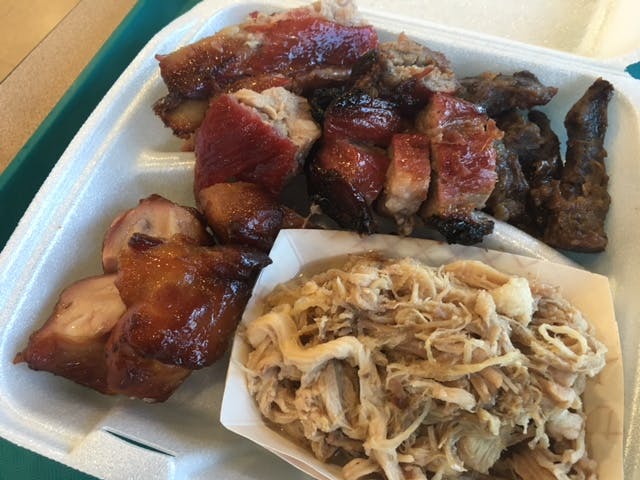
The woman who cut my meat assured me that the meat was cooked in an imu, but didn’t specify where it was cooked. Pit or no pit, I’d sooner return for the char siu pork. As I’d find with most every other version of kalua pork on the trip, Young’s version consisted of strands of wet, salty pork. There’s no skin, no bark, and no real smokiness.
I also ordered lomi-lomi salmon (a salad of tomatoes and cured salmon) and poi (mashed taro root), basically the slaw and pinto beans of Hawaiian barbecue. I should have added macaroni salad (referred to only as “mac salad” by locals) to make it the trifecta of Hawaiian barbecue sides. (Though white rice is often substituted for poi.)
My next stop was one of convenience: I passed a place called Bob’s Bar-B-Que, where I ordered a kalua pig sandwich of roasted pork with lettuce on a sesame seed bun, as well as some baby back ribs and big beef ribs. But those dishes reminded me that I was here to delve into Hawaiian barbecue, not Hawaii’s version of mainland barbecue.
At a non-barbecue dinner that night, I met chef Lee Anne Wong, of Koko Head Cafe, and told her about my quest for kalua pig. She couldn’t think of any restaurants offering the traditional version, but recommended a smoky version at Waiahole Poi Factory on the northeast side of Oahu. I marked it down for the following day’s itinerary. Other dinner guests began offering suggestions, but assured me it wouldn’t be easy to find a functioning imu at a Hawaiian restaurant. The process is a time-consuming ritual done largely for show at luaus around the islands, or served for graduation parties, and one-year old birthday parties. Being graduation season, the incredibly helpful local, Tannya Joaquin even tried to find a party for me to crash, but to no avail. I was off to Waiahole the next morning.
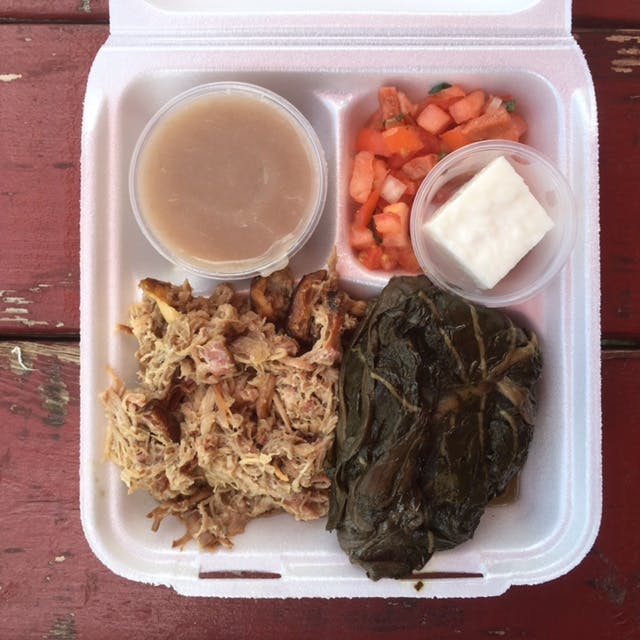
A pellet-fueled cabinet smoker stood in for the imu at Waiahole Poi Factory. The shredded pork wasn’t as wet as the others I’d tried, and it did have more smokiness but it wasn’t a revelation. I should also note that although they do make their poi as the name suggests, it’s as utterly tasteless as every other poi I tried in Hawaii.
Back in Honolulu, I tried several other versions of kalua pig over a few days time. They were all the same basic version of wet, salty, shredded pork, and they were all roasted in an oven.
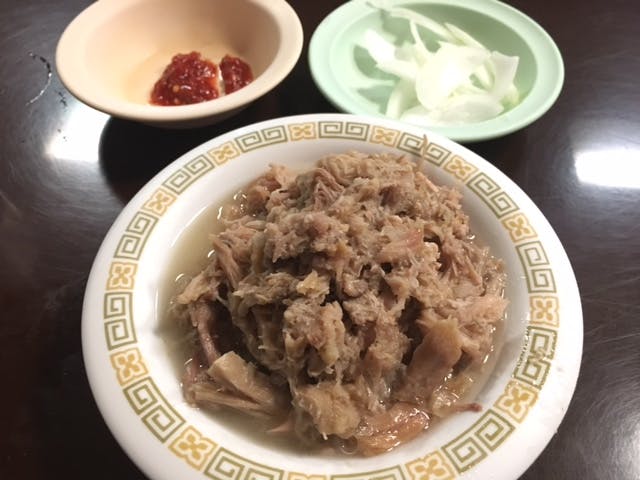
Helena’s Hawaiian Food was been serving authentic Hawaiian recipes since 1946. Craig Katsuyoshi now runs the place, and still cooks whole pigs and shoulders in the restaurant’s imu, just like they’ve always done. His mother, Elaine (founder Helen Chock’s daughter) was working the counter and was happy to share the restaurant’s history and make a few menu suggestions, including the smoky pipikaula short ribs. She also stressed the importance of their imu, which they utilize a few days a week.
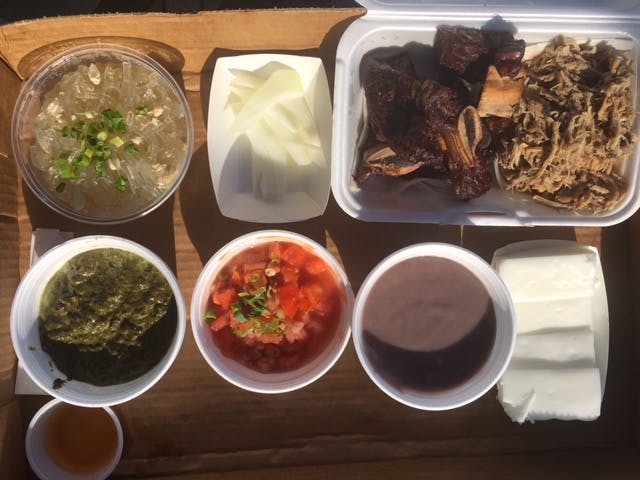
The pork wasn’t noticeably more smoky, but it wasn’t so waterlogged as others. It was still salty and juicy, and a healthy dose of chili pepper water gave it some zing. Any Texan would find it to be a perfect filling for tacos, but there wasn’t a tortilla in sight. I had to settle for a fork, but I wasn’t complaining.
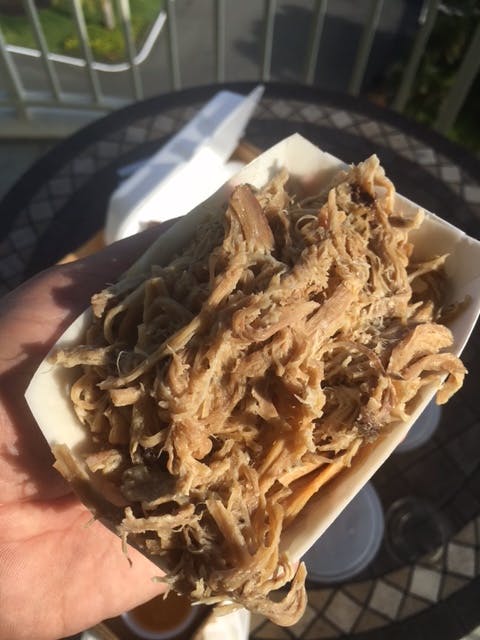
Minus Helena’s, finding true kalua pork in a restaurant was a challenge, so I planned to witness the process in the way that most tourists do: A luau. I bought two last-minute VIP tickets to the Drums of the Pacific Luau at the Hyatt Regency just north of Lahaina on Maui (the more popular Old Lahaina Luau was sold out for the next couple months). It came with front-row seats, an open bar, and promised an authentic imu ceremony. When the pig’s unveiling was announced, I raced over to the pit. Two costumed men used shovels to scrape sand away from a wire-framed tunnel of burlap that covered the pig. Its mahogany skin had ruptured from the heat, and the animal was held together only by chicken wire.
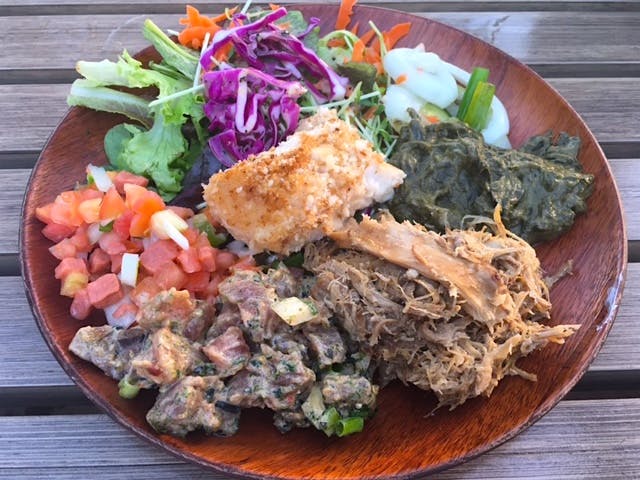
Weighing what looked like forty pounds at most, the pig was easily hoisted onto a garnished tray by the pair of men. The nearly intact pig was then paraded before the group to suggest that it was about to become dinner, but it was just part of the show. Ten minutes later we were queued up at a buffet table where a bounty of pulled pork filled several steam trays. If that one oinker had served the crowd of 500 it would have been on par with Jesus’s five loaves and two fishes feat, but the hog had just been taken back to the kitchen. It would indeed be fed to luau attendees, but the meat was mixed in with a much larger amount of oven-roasted pork from the hotel’s kitchen. Even at the signature Hawaiian event meant to celebrate the pig and the imu, it’s hard to get kalua pig cooked in an imu.
For my final night in Honolulu, I attended a hukilau beach cookout put on by the Hawaii Food & Wine Festival (full disclosure: my wife and I received complimentary tickets), where I found the most unorthodox kalua pig of the trip. Ed Kenney is a local chef with three highly acclaimed restaurants, the most recent being Mud Hen Water. He was browning large coils of pork sausage, and serving chunks of it with mashed bananas and cabbage. I thought I’d been once again duped by the “kalua pig” moniker, but he had a good explanation.
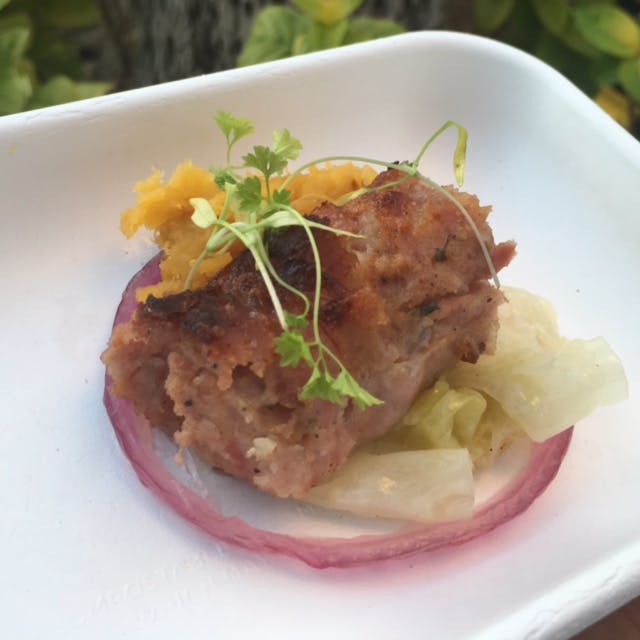
Kenney and a few other culinary cohorts have a loosely organized group they call the Palolo Imu Gang. Kenny spoke earnestly about his love for cooking in an imu, but wanted to branch out for the event. Instead of a whole pig, he had made a pork and rice sausage, surrounded it with cabbage and native bananas, and buried it all in an imu. Three hours later, his team uncovered it all and ferried it to the Kahala resort, where the event was hosted.
It was a sausage like I’d never eaten, but it was fantastic. I walked the grounds sending people to Kenney’s tent to try it. While savoring a fourth helping, I talked with Kenney about the similarities of barbacoa and kalua pig, and of the challenges of imu cooking, but none of them compared to how hard it has become to source locally-raised pork. The farmers from his two best sources for pork were both set to retire within a year. Prices for others are astronomical because they haven’t been able to scale up production. Couple the high prices for locally grown pork with the Costco effect, and it’s hard to find a market for it.
Kenney wasn’t the only chef who talked about the Costco effect. Costco moved into their current downtown location in 2002. Since then, it has become the most profitable store in the country. Their cut-rate prices for oversized packages of cheap mainland pork have convinced Hawaiians that pork has little value. Pork from the mainland is so much cheaper that most restauranteurs don’t bother with local meat, making it even harder to convince farmers to provide it.
Kenny, for his part is dedicated to using locally-grown pork from Shinsato Farm in his restaurants, and for the unique kalua pig sausage. He even joked about starting his own pig farm to supply his restaurants, although it didn’t sound entirely like a joke. As for the challenges of cooking pig in an imu, Kenney was sincere when he told Eater a couple years ago that he’d “never had a perfect imu,” but I think he may have done it on that night. I’m certainly no expert on Hawaiian cooking, but Kenney’s was the best kalua pig I ate in Hawaii, even if it wasn’t the most traditional.
- More About:
- Barbacoa


